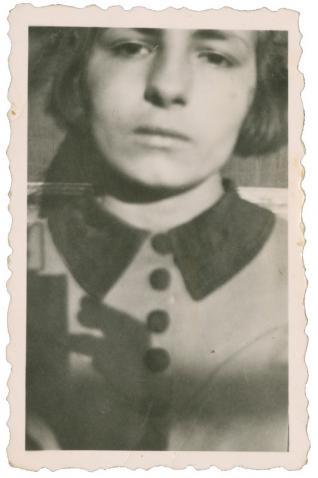For many years, Michel Frizot the historian and theorist has been collecting neglected photographs which have been overlooked because they were taken by anonymous, unknown photographers, unheard-of or non-celebrated artists, throughout the entire history of photography. Avoiding “museumification” and classification, selected first of all for their capacity for surprise, these photographs are no less generous, moving and perhaps “photographic” than others. This exhibition reflects on the element of mystery in all photography.
Because they are so familiar to us, because they are part of our visual space, photographic images seem to be immediately accessible and understandable. But everyone has experienced that sudden burst of amazement they can set off through suspended movements, the rendering of colours, unexpected coincidences or abruptly frozen expressions. If we pay attention to such features, they provoke the feeling that we are faced at once with something obvious and with a question. When we can look at a photograph as soon as we have “taken” it, we immediately, moreover, sense the distance between what the image tells us and what we have been able to see for ourselves only seconds before. The observation of this disparity, recognisable at every moment, is proper to the photographic phenomenon. We grant each photograph an element of truth but suspect its indeterminacy and sense its contradictions.
The photographic image is a constellation of questions for the eye because it offers viewers forms and signs they have never perceived as such and which conflict with their natural vision.
The enigma, the riddle, the puzzle would thus be fundamental to the photographic act itself.
Inherent in the photographic process, it results from the irreducible distance between the human senses and the camera’s light-sensitive capture: it arises from the split between visual perception and the photographic process.
For the eye, every photograph is an enigma.
Whether they are kept in archives, family albums or agencies, or dumped in the street, photographs are virtual objects which only begin to exist when they find a viewer. The selective collecting process is thus carried out “by eye” and not the eye of the connoisseur or the historian, but the paradoxical eye which goes against the tide of the canonically “good” photograph, it is a slow eye which opens itself to the pleasure of choice. The pursuit of irreplaceable strangeness. A determined eye, in search of what it does not yet know and yet perceives as the baring of the “photographic”, the liberated escape into a “pure” photographic act stripped of its eloquence. By repeating the selections, the eye discovers the unknown properties of the photographic image: it spots the elements of a puzzle to be savoured without anticipation of any solution. As a kind of practical application, when we look closely, these photographs seem more “photographic” than so many other images with more conventional features that quickly lose their interest. They reveal what escapes us in the recognition of the world, what lies beyond its photographic figures repeated over and over again.
The answer to the Sphinx’s riddle, it should be remembered, is humankind. And looking at a photograph means discovering oneself and the human species. Through the disparity and the dissonance between what it shows and what we experience, photography testifies above all, and at every moment, to what “being human” means. And the riddle, the enigma inherent in looking at a photograph is that of our presence in the world.
Michel FRIZOT
Extract from the book « Toute photographie fait énigme
/ Every photograph is an enigma
», Hazan, 2014
Michel Frizot is an Emeritus Research Director at the CNRS and he first began studying photography as an art historian. He taught the history and theory of photography at the École du Louvre from 1990 to 2010, and at the Ecole des Hautes études en sciences sociales up until 2010.
He edited the Nouvelle Histoire de la Photographie
(Bordas/ Adam Biro, 1994; Larousse, 1998) which stood out from previous historical accounts by including forms heretofore considered to be minor (popular photography, photos printed in magazines and books, anonymous and amateur photography, photomontages, etc.) He has written a number of articles on old and modern photography practices, monographic catalogues and exhibition catalogues (Etienne-Jules Marey, Hippolyte Bayard, Kertész, VU photographic magazine).
In parallel with his academic career, he tirelessly collected photographs that were neglected by historians, “collectors” and institutions, as they appeared to reveal photographic qualities independent of aesthetic ambitions and documentary imperatives.
Here, he shares a singular outlook dedicated to highlighting all types of photography and analysing how images are perceived.
Exhibition co-produced with the Maison Européenne de la Photographie, Paris and Fotomuseum Winterthur
A book has been published to coincide with the exhibition:
Michel Frizot, Toute photographie fait énigme / Every photograph is an enigma,
Hazan, 2014.
224 pages, 170 illustrations, french/english
ISBN : 9782754107747
Prix : 39 €






